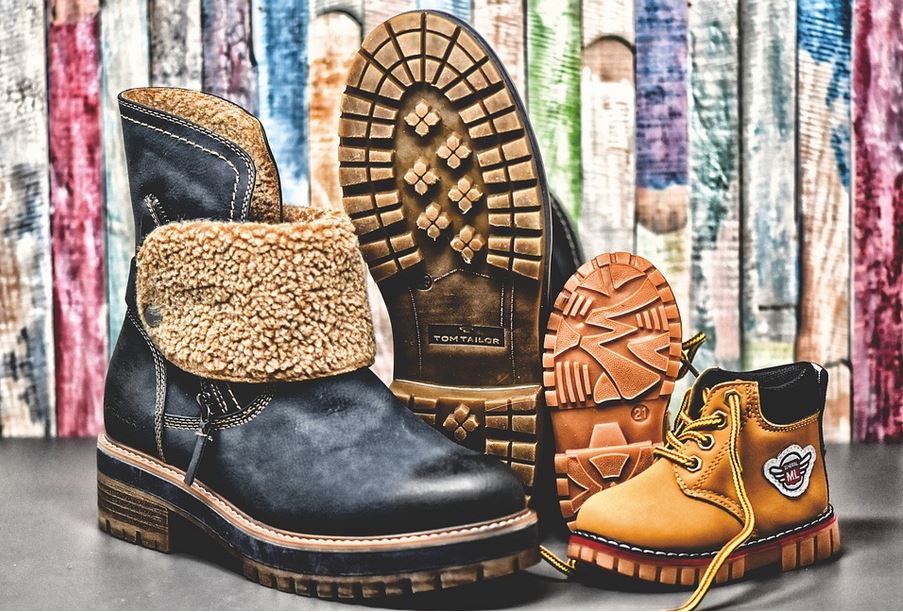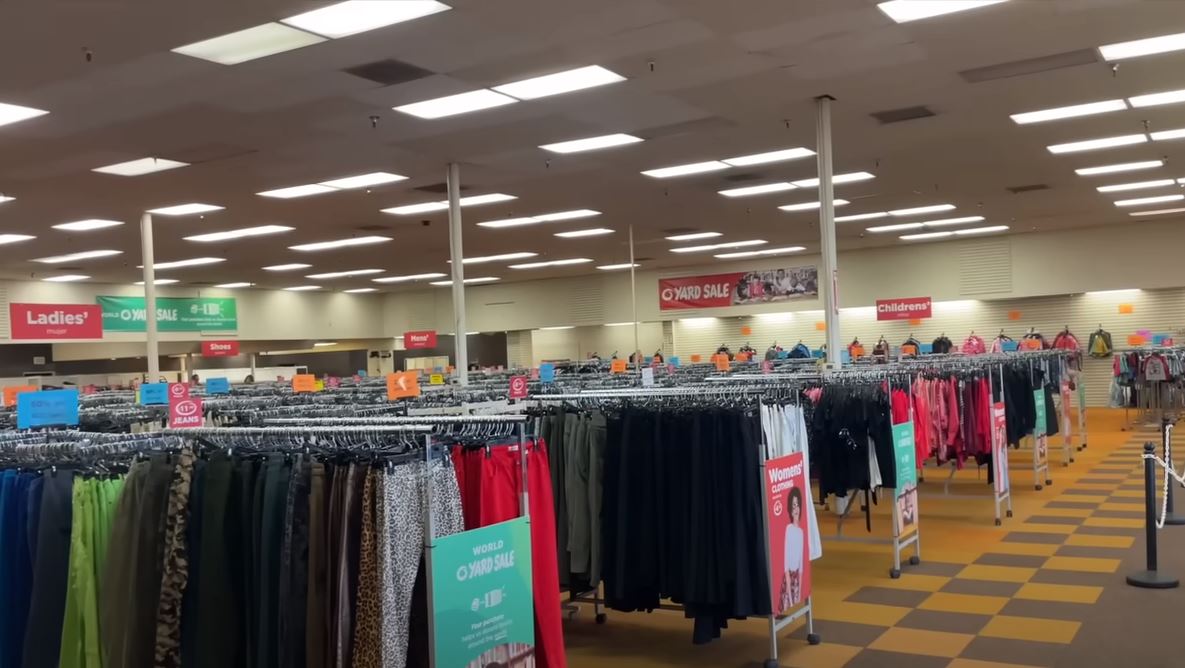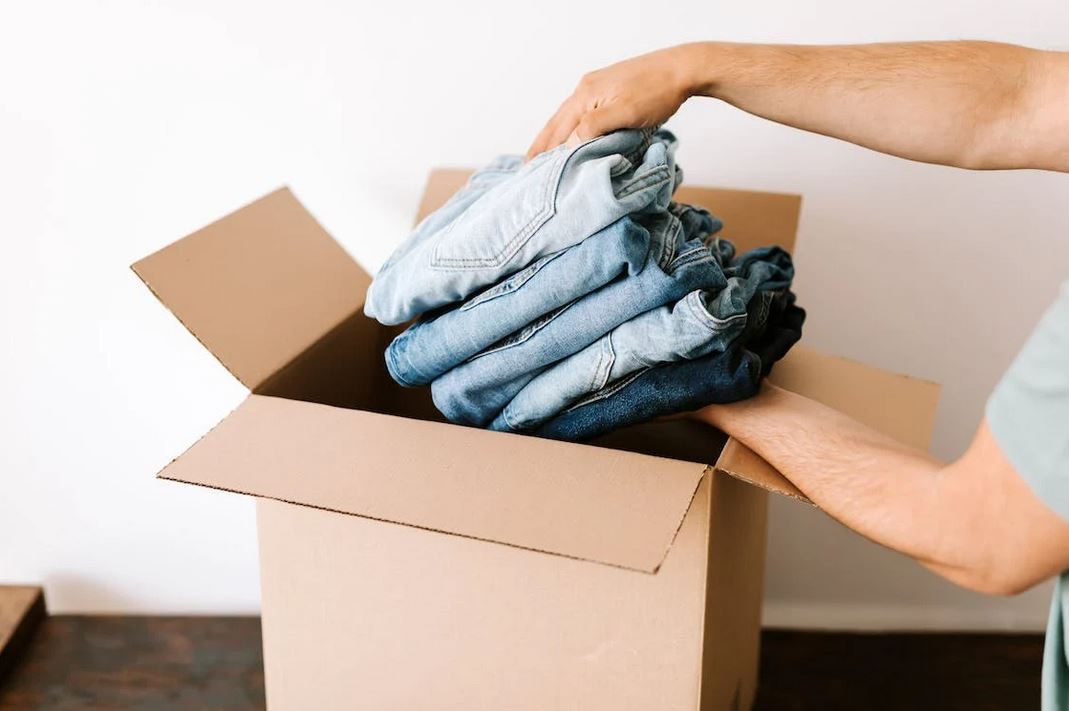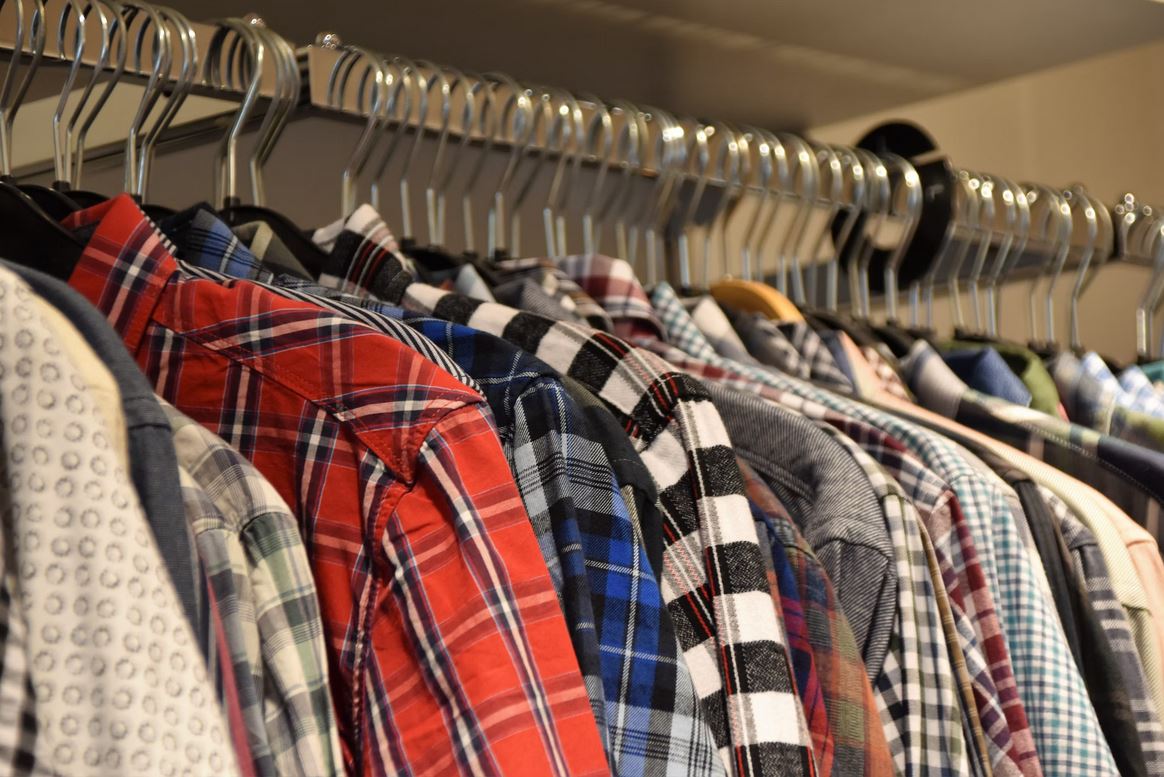How to Clean Thrifted Shoes: 10 In-Depth Step-by-Step Guide
If you’re looking for a detailed step-by-step guide on how to clean thrifted shoes, I recommend this 10-step article to you. Thrift stores are a treasure trove for finding discounted designer kicks and unique vintage shoes. However, used footwear often carries dirt, odors, and germs along for the ride. Cleaning and disinfecting secondhand shoes is a must before wearing them.
In this comprehensive guide, you’ll learn how to fully refresh thrift store shoe finds to make them fresh, clean, and safe to wear again.
Key Takeaways
When buying and cleaning used shoes from thrift stores, keep these key tips in mind:
- Inspect shoes closely before purchasing – minor wear is OK, but avoid permanent damage or stains
- Disinfect shoes with alcohol, UV light, or antimicrobial spray before first wear to kill germs
- Wash removable linings, inserts, and laces in the washing machine on delicate cycle
- Hand wash the shoes themselves gently but thoroughly with mild soap and water
- Deodorize smelly shoes with baking soda, charcoal bags, or other odor absorbers
- Stuff shoes with newspaper or cedar shoe trees to absorb moisture and hold shape as they dry
- Follow material-specific care – use leather cleaners for leather, suede brush for suede shoes
With some smarts and elbow grease, you can score amazing discounted shoes and keep your feet happy.
Let me know if you would like me to modify the key takeaways section in any way. I aimed to highlight the most important shoes thrifting tips in a scannable, engaging format.
Why Buy Pre-Owned Shoes?
Here are the main reasons to consider thrifting shoes:
Save Money on Designer Brands and Vintage
- Pre-owned shoes can cost 50-75% less than retail price for brand new.
- Score luxury brands like Louboutin, Manolo Blahnik, Gucci, etc. for bargain prices.
- Find vintage styles long out of production. 80s neon, 70s platforms, 60s Go Go boots – thrifting uncovers rare nostalgic gems.
More Environmentally Sustainable
- Extends the lifecycle of shoes that might otherwise get tossed.
- Reduces waste by giving gently worn items renewed life. An eco-friendly way to expand your shoe collection!
Try Out Styles
- Lets you experiment with trendy or statement shoes for less.
- If you’re unsure about a look, buy secondhand first before investing in new.
The Thrill of the Hunt
- Thrifting for shoes is an adrenaline-pumping treasure hunt. Will you uncover dinosaur stomper platforms or studded punk boots today? You never know what surprising styles or designer brands each visit may uncover.
However, used shoes also carry some risks if not cleaned properly:
Bacteria and Fungi
Dirty shoes can harbor bacteria, viruses, and fungi which can lead to:
- Athlete’s foot
- Toenail fungus
- Plantar warts
- Foot infections
Disinfecting shoes kills these germs before they infect your feet.
Stinky Odors
Used shoes may have accumulated:
- Sweat
- Dirt
- Grime
This leads to unpleasant foot and shoe odors. Cleaning and deodorizing eliminates these undesirable scents.
Stains, Grime, and Damage
Pre-owned shoes show wear and tear such as:
- Scuffs
- Stains
- Discoloration
- Worn out soles
- Holes or tears
A deep clean helps reduce appearance of stains and damage.
Thorough cleaning and disinfecting pre-owned shoes before wearing is crucial. So let’s dive into the methods and steps to refresh thrift store shoe finds!
1. Preparing Shoes Before Cleaning
Before you suds up, prep shoes for cleaning with these steps:
Remove Laces, Inserts, Padding
- Take out shoelaces, insoles, and any removable padding or lining.
- These components can be washed separately from the shoes.
Assess Condition
- Inspect for deep set stains, permanent damage, or excessive wear.
- Can the shoes be salvaged or are they too far gone?
- Look out for mold, which may be tricky to remove fully.
Have Proper Supplies Ready
Gather your cleaning arsenal:
- Mild liquid soap or detergent (avoid harsh chemicals)
- Old toothbrush to scrub dirt in crevices
- Clean rags, sponges, or soft brush
- Baking soda to deodorize
- White vinegar to clean and disinfect
- Small bowl of water
- Old towel to stuff shoes and retain shape
- Disinfectant spray formulated for shoes/fabrics
- Laundry detergent for washing linings
- Leather conditioner for leather shoes
Now let’s get to deep cleaning your thrifted shoes!
2. Hand Washing Shoes
Gently hand washing shoes cleans without damage. Use this method for:
- Leather, suede, nubuck, canvas
- Delicate materials
- Vintage or fragile shoes
Follow these hand washing steps:
Clean Upper Gently
- Mix a mild soap with warm water in a bowl.
- Dip a soft rag, sponge, or brush in the solution.
- Gently scrub stained or dirty areas on the shoe upper, sides, back.
- Take care not to over-wet shoes to avoid damage.
Clean Lining and Interior
- Use a small amount of soapy water and a rag or soft brush.
- Gently scrub the lining and interior surfaces.
- Remove dirt, stains, and debris.
Scrub Soles
- Make a soapy solution with a touch of dish soap and warm water.
- Use a small brush, toothbrush, or rag to gently scrub the soles and edges.
- Remove built-up grime in crevices.
Rinse Shoes
- Wipe shoes with a clean damp rag to rinse away soap residue.
- Take care not to over-wet shoes.
- Stuff inside tightly with towel to absorb moisture.
Air Dry Properly
- Newspaper or towel inside shoes preserves shape as they dry.
- Allow 1-2 days to fully dry.
- Avoid direct sun or heat which can damage shoes as they dry.
Condition Leather
- For leather shoes, apply leather conditioner when fully dry.
- Helps moisturize and protects leather material.
With gentle hand washing, you can thoroughly clean thrift store shoes while still being kind to delicate materials and vintage construction.
3. Scrubbing Away Stubborn Stains
Got challenging set-in stains on your secondhand shoes? Try these stain-fighting solutions:
Baking Soda Paste
Mix baking soda with just enough water to form a paste. Use an old toothbrush to gently scrub stained areas. Let sit briefly before wiping clean with a damp rag.
Baking soda naturally lifts stains and deodorizes.
Vinegar Rinse
- Mix 1 part white vinegar to 2 parts water.
- Dip clean rag in solution and blot stains.
- Vinegar helps clean shoes and kills bacteria.
Hydrogen Peroxide
- Works on organic stains – blood, grass, etc.
- Apply peroxide to stained spot using cotton swab.
- Let bubble up stain, then rinse.
Dish Soap
For tough oil-based stains, concentrated dish soap can help cut through grease.
Gently scrub soaped areas with a small brush. Rinse clean.
With some elbow grease and household cleaners, you can usually remove pesky used shoe stains.
4. Restoring White Soles
Keep those fresh kicks extra white with these tips for cleaning soles:
Magic Eraser
Gently wipe stained or yellowed rubber soles with a magic eraser sponge. The melamine foam lifts dirt without scrubbing.
Baking Soda
Mix baking soda and water into a paste. Use an old toothbrush to gently scrub stains on white rubber or leather soles.
Whitener Pen
Special whitener pens for shoes help brighten up dingy soles. Shake pen first and carefully apply to avoid getting whitener on shoe upper.
Avoid Bleach
Skip the bleach – it can damage and yellow materials. Use a shoe-safe whitener instead.
With some gentle elbow grease, you can get those thrift store shoe soles sparkling white again!
5. Washing Machine Method
For shoes that can withstand it, the washing machine does the hard work for you.
What Can Be Washed?
The washing machine is safe for:
- Canvas or mesh shoes
- Removable foam insoles
- Cloth linings or inserts
Avoid machine washing for:
- Leather, suede shoes
- Shoes glued or stitched together
- Vintage or fragile shoes
Protect Shoes in a Wash Bag
- Place shoes inside a laundry bag and zip closed.
- This prevents banging around damage during the wash.
- Look for a bag specifically sized for shoes or delicates.
Gentle Wash Cycle
- Wash in cold water using the delicate or gentle cycle.
- Avoid vigorous agitation of a normal cycle.
- Use a mild detergent without bleach.
Stuff Shoes With Towels
- Place towels inside shoes before drying.
- This absorbs moisture and helps preserve the shape as they dry.
Air Dry
Lay shoes with towels inside on a drying rack out of direct sunlight. Allow 1-2 days to fully dry.
Use caution when machine washing shoes. But when done properly, it saves time and elbow grease!
6. Disinfecting and Sanitizing Shoes
Pre-owned shoes harbor bacteria, fungi, and viruses you don’t want transferring to your feet!
Disinfecting shoes before wearing is crucial. Here are methods to kill germs:
Isopropyl Rubbing Alcohol
Rubbing alcohol is a tried and true disinfectant.
- Use 70% isopropyl alcohol for maximum germ-killing.
- Dampen a clean rag with the rubbing alcohol. Thoroughly wipe down the exterior and interior lining.
- The alcohol evaporates quickly without leaving shoes damp.
Bleach and Water Solution
Household bleach sanitizes shoes when diluted properly in water.
- Mix 1 part regular bleach to 10 parts cool water.
- Dip a clean rag in the solution and wipe down shoes inside and out.
- Rinse shoes with a damp rag afterward.
- Allow shoes to fully air dry before wearing.
Baking Soda and Hydrogen Peroxide
- Make a paste with 3 parts baking soda to 1 part hydrogen peroxide.
- Use an old toothbrush to gently apply the fizzing paste to shoes.
- Let sit briefly before rinsing clean and drying fully.
Antibacterial Spray
Look for shoe and fabric disinfectant sprays made for the purpose.
- Spray down the exterior and interior lining of the shoes.
- Allow to fully dry before wearing again.
UV Shoe Sanitizer
UV-C light kills bacteria and viruses that traditional cleaning can miss.
- Place shoes in the sanitizing device.
- Run the cycle per device instructions, typically 10-30 mins.
- The UV light fully penetrates to disinfect shoes.
Disinfecting pre-owned shoes before wearing prevents fungus and infections for happy feet!
7. Deodorizing Smelly Shoes
Used shoes often come with funky odors from sweat and dirt buildup. Kick stinky smells to the curb with these deodorizing methods.
Baking Soda
The natural odor absorber baking soda gently freshens shoes.
- Sprinkle 2-3 tablespoons of baking soda in each shoe.
- Let sit overnight before shaking out.
- The baking soda soaks up smells without adding fragrance.
Freezer Treatments
Place shoes in a plastic bag then freeze overnight. The cold helps kill bacteria that causes odors.
Tea Bags
Placing dry tea bags inside shoes absorbs moisture and smell.
- Stuff each shoe fully with unused tea bags.
- Allow to sit 1-2 days until odors disappear.
Charcoal Inserts
Special shoe charcoal inserts absorb odors naturally.
- Cut to fit inserts into shoes before wearing.
- Replace inserts monthly for lasting freshness.
With some smart tricks, you can get secondhand shoes smelling fresh again.
8. Storing Shoes Between Wears
Keep your thrifted shoes in tip-top shape between wears with proper storage:
Allow Shoes To Fully Air and Dry Out
- Rotate shoes so you aren’t wearing the same pair two days in a row.
- This gives shoes time to fully dry and avoid odor-causing bacteria.
Use Shoe Trees
Shoe trees absorb moisture and help retain the shoe’s shape between wears.
- Look for cedar wood trees with adjustable width and length.
- Insert trees tightly after wearing shoes.
Avoid Direct Sunlight and Heat
Don’t store shoes:
- Near heat vents
- In hot attics or garages
- In direct sunlight
The heat can warp and crack shoes over time.
Seal in Plastic Bag or Container
For extra protection, place each pair of shoes in:
- Breathable fabric shoe bags
- Plastic container with ventilation holes
- Reusable plastic storage bag
This prevents dust and keeps pairs together.
With some TLC between wears, your thrift store shoes will last years!
9. Expert Tips for Thrifting Shoes
We asked professional shoe sellers and experts for their best advice on buying and cleaning used shoes:
Inspect Condition Closely
Only purchase shoes that are gently used – minor wear and tear should brush or wash away. Avoid:
- Permanent stains
- Discoloration
- Major scuffs
- Soles worn thin
- Mold or mildew smells
Disinfect First Before Wearing
- Lightly used shoes still need disinfecting which kills bacteria and fungi.
- “Better safe than sorry when it comes to foot health,” says expert Caleb Brown.
- Disinfect with rubbing alcohol, antibacterial spray, or a UV sanitizer.
Wash Removable Parts Separately
The pros recommend machine washing any removable shoe components first:
- Cloth linings
- Foam insoles
- Laces
Then clean the rest of the shoes by hand in a sink using gentle soap and water.
Follow Material-Specific Care
Make sure to use the right cleaning method for the shoe material:
- Leather cleaners and conditioners for leather shoes
- Suede brush for suede shoes
- Avoid over-wetting canvas or mesh
This prevents damage as you clean.
10. Recommended Cleaning Products
The pros rely on these top-rated shoe cleaning products:
- Reshoevn8r Shoe Cleaning Kit – Includes brush and cleaning solution specially formulated for shoes.
- Jason Markk Premium Shoe Cleaning Brush – Gentle nylon bristle brush safely cleans all materials.
- Sneaker Laundry Bags – Protect shoes in the washing machine.
- Cedar Shoe Trees – Absorb moisture between wears and maintain shape.
- SteriShoe UV Sanitizer – Kills 99% of bacteria and germs with UV-C light.
- Dr. Scholl’s Shoe Deodorant Spray – Eliminates odors naturally without heavy fragrance.
Final Remarks – How to Clean Thrifted Shoes
With some guidance and the proper tools, you can fully refresh shoes purchased from the thrift store. Focus on:
- Machine or hand washing shoes gently but thoroughly
- Disinfecting inside and out before first wear
- Using deodorizers and antimicrobials
- Storing shoes properly between wears
The time invested in deep cleaning and sanitizing secondhand shoes pays off with money saved and unique additions to your wardrobe. Just be selective when purchasing used footwear – inspect condition closely and avoid shoes that are too worn out or stained.
With these tips, you can confidently build your dream shoe collection on a budget while keeping feet fresh and healthy!
Frequently Asked Questions
Why is cleaning used shoes important?
Pre-owned shoes can harbor bacteria, fungi, and unpleasant odors. Disinfecting and cleaning them makes thrifted shoes fresh and safe to wear.
What supplies do I need to clean thrifted shoes?
Have ready mild soap, toothbrush, cleaning rags, disinfectant spray, baking soda, vinegar, laundry detergent, and shoe trees.
Can I put used shoes in the washing machine?
Canvas or mesh shoes can be machine washed inside a laundry bag on delicate cycle. Avoid machine washing leather or delicate shoes.
How do I sanitize used shoes?
Disinfect with rubbing alcohol, bleach solution, antibacterial spray, or a UV shoe sanitizer to kill germs.
What gets out stains on thrifted shoes?
Baking soda paste, dish soap, hydrogen peroxide, and vinegar help lift stubborn shoe stains. Gently scrub with a toothbrush.
How do you get odors out of smelly used shoes?
Baking soda, charcoal bags, tea bags, and freezing overnight help absorb unwanted smells from shoes.
Can I bleach used shoes to whiten them?
Avoid bleach as it can damage shoes. Use baking soda paste or shoe whitener pens on dingy soles.
How do you dry shoes after cleaning?
Stuff shoes with towels and dry slowly out of direct sunlight. Rotate shoes between wears for thorough drying.
editor's pick
latest video
Want Tips, Guides on Thrifting?
Subscribe to our newsletter today and get custom thrifting tips, and guides!
You can opt-out anytime.




